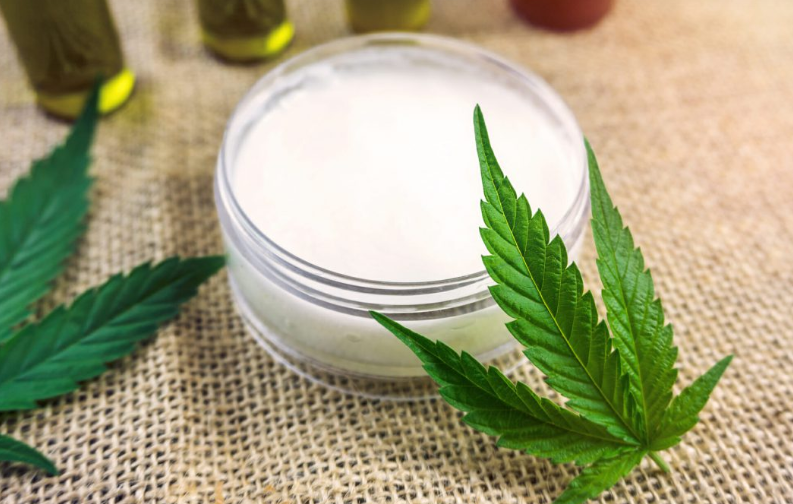Chinese and U.S. University Research Institutes Join Forces to Uncover Potential Therapeutic Applications and Mechanisms of Action of CBG
Recently, a new review of scientific research on the obscure cannabinoid cannabigerol (Cbg) claims that the compound has “the potential to modulate a wide range of physiological functions,” which could give it “therapeutic ability to alleviate a wide range of diseases, including cancer, metabolic disorders, pain, and inflammatory diseases, among others “.
The new paper, published this month in the journal Molecules, states that “CBG has emerged as a potential therapeutic agent with multiple effects. Although research on CBG is still in its early stages, its unique molecular mechanisms and highly promising therapeutic properties warrant further exploration.”
The study focused not only on the potential effects of CBG, but also on its mechanism of action. Like Delta-9 THC and Cbd, CBG interacts with cannabinoid receptors in the body, but it also “has a unique affinity for other receptors, e.g., alpha 2AR and 5-HT 1A receptors,” the study says.
The report states that the “multiple mechanisms” of cannabinoids could lead to “a wide range of potential therapeutic applications, including neuroprotection, anti-inflammatory, antimicrobial, blood pressure lowering, cancer treatment, pain management, and metabolic syndrome.”
Some CBG users have also reported improvements in their sleep quality, “although this has not been confirmed by clinical studies.”
The 10-person team behind this new review includes researchers from Guangdong University of Technology in Guangzhou, China; Cedars-Sinai Cancer Institute in Los Angeles; City of Hope Beckman Research Institute in Duarte, California; Guangzhou University of Traditional Chinese Medicine; and Sun Yat-sen University in Guangzhou.
The authors state that while the study “provides some excellent reviews of CBG and explores the pharmacological potential, the biological activity of CBD and its analogs, the biomedical relevance and its interactions with voltage-gated sodium channels,” their own review differs from the others in that it reveals “the molecular mechanisms of action underlying the therapeutic efficacy of CBG in different disease contexts”.
From there, the report cites evidence for the role of CBG in a variety of therapeutic applications. For example, it points to the neuroprotective possibilities of CBG-illustrating potential applications for the treatment of neurodegenerative diseases, including Alzheimer's disease, Parkinson's disease, and multiple sclerosis; and notes that CBG has been shown to treat and improve motor function and Reduce Stress markers in the brain.
The authors note that a number of reviewed studies have examined CBG in conjunction with other cannabinoids, adding that “studying CBG independently of other cannabinoids could identify unique therapeutic properties and specific mechanisms with a central nervous system context.”
Regarding pain, the authors point to evidence that CBG reduces pain sensitivity in mice and note that one possible explanation is that cannabinoids “may make it more difficult for pain signals to be transmitted efficiently.”
“This study reveals a potential mechanism for the indirect neuroprotective effects of CBG. By reducing pain signaling in the nervous system, CBG may alleviate chronic pain conditions,” the authors write. “This finding provides further evidence of the potential role of CBG in controlling pain by protecting the nervous system.”
The report also examined evidence of CBG's anti-inflammatory effects, which may be helpful in treating inflammatory bowel disease (including Crohn's disease and ulcerative colitis), rheumatoid arthritis, allergic asthma and liver damage. The report also suggests that cannabinoids may have antimicrobial effects and play a role in treating low blood pressure or vasoconstriction.
The study suggests that CBG “may disrupt the bacterial cell membrane, a critical barrier to cell survival,” the authors write. “This disruption may lead to leakage of essential cellular components and ultimately to cell death.” The cannabinoid also appears to inhibit the formation of certain biofilms, a community of bacteria that are highly resistant to antibiotics.
The paper notes that new research is also looking at the role of CBG in anti-cancer treatments, adding a study that until recently focused on THC and CBD.
“A growing body of evidence confirms the antitumor properties of CBG, demonstrating its efficacy in reducing cell proliferation, migration, and survival in a variety of tumor types,” the study notes, ”including prostate, glioblastoma, colorectal, pancreatic, and breast cancers. ”
Combining CBG with traditional chemotherapy “is expected to improve treatment efficacy,” the report noted, as cannabinoid mixtures may also be beneficial for some cancers.
For example, both CBG and CBD appeared to inhibit prostate cancer development to some extent in mice, but “the combination of the two showed potent anticancer effects even in mice unresponsive to enzalutamide (an androgen receptor agonist) treatment,” the report explains. “Thus, combination therapy may be an attractive adjuvant treatment option for prostate cancer models.”
Another disease the authors considered was metabolic syndrome, which has been linked to the development of other diseases such as cardiovascular disease, liver disease and type 2 diabetes.
“Recent studies of CBG offer a potential pharmacological strategy for metabolic syndrome,” the study writes, noting that CBG is ”the only known cannabinoid capable of activating adrenergic receptors.”
The review states that CBG “has been shown to reduce appetite and induce weight loss by blocking CB1 receptors” and “increase the activity of brown adipose tissue (BAT), which is primarily responsible for calorie burning and calorie production.” CBG's derivative, HUM-234, has been shown to to prevent weight gain induced by a high-fat diet and reduce serum levels of the liver enzymes ALT and AST.”
Many of the studies evaluated in the new review involved cell or mouse model studies. In many areas where CBG shows therapeutic promise, human trials are critical to advancing therapeutic development, the team says.
“As research progresses, CBG promises to be a promising therapeutic agent with a unique molecular profile and a wide range of potential benefits,” the authors write. “As our understanding of CBG grows, it may lead to breakthroughs in the treatment of complex diseases and ultimately improve patient outcomes and expand the use of cannabinoid medicines.”
The authors add that further research should focus not only on “clinical trials, detailed mechanistic studies, and optimized delivery systems,” but also on its “synergistic effects with other cannabinoids and traditional medicines.”
The paper notes, “Over the next decade, CBG may be integrated into mainstream medical practice and revolutionize the treatment of many chronic and debilitating diseases.”
While marijuana research in general continues to face obstacles, the scientific community's study of the diverse chemical components of cannabis has expanded significantly as the nation's war on marijuana wanes.
Another paper published earlier this year found that “a variety of little-known phytocannabinoids, as well as terpenes, flavonoids, and alkaloids,” have been shown to have “a wide range of pharmacological activities” and may offer a variety of therapeutic applications.
The report, authored by two researchers at the Center for Dementia Research at the Nathan Kline Institute of Psychiatry in New York, states, “The antioxidant, anti-inflammatory, and neuromodulatory effects of these compounds make them promising agents for the treatment of neurodegenerative diseases.”
The research follows an independent study published this summer on trace chemicals in marijuana, which found that trace cannabinoids may have anti-cancer effects on blood cancers.
The study, published in the journal BioFactors, examined trace cannabinoids and multiple myeloma (MM), tested cellular models for responses to the cannabinoids CBG, CBC, CBN, and CBDV, and examined CBN in a mouse model.
The authors write, “In conclusion, our results suggest that CBG, CBC, CBN, and CBDV could be promising anticancer agents for multiple myeloma (MM) because of their cytotoxic effects on MM cell lines and, in the case of CBN, in an in vivo xenograft mouse model of MM. ”
The study also noted that cannabinoids apparently “have beneficial effects on bone, reducing bone invasion and bone resorption by MM cells (mainly CBG and CBN).”
Meanwhile, a recent study found that while the claim that cannabis-produced terpenes can modulate marijuana euphoria “appears plausible,” it remains “unproven.”
Meanwhile, a federally-funded study published in May found that terpenes may be “a potential therapeutic agent for chronic neuropathic pain,” and that injected doses of terpenes resulted in “roughly equal reductions” in pain indicators compared to small doses of morphine, but in the case of Terpenes also appear to enhance the efficacy of morphine when used in combination with morphine.
However, the study found that, unlike morphine, none of the terpenoids studied produced a meaningful reward response, suggesting that “terpenoids may be effective analgesics without rewarding or annoying side effects.”
Another study published earlier this year investigated the “synergistic effects” between cannabinoids, terpenes, flavonoids and other molecules in the plant, concluding that a better understanding of the relationships between the various chemical components “is essential to unraveling the full therapeutic potential of cannabis “.
Another recent study funded by the National Institute on Drug Abuse (NIDA) found that D-limonene, a citrus-flavored terpene in marijuana, can help alleviate THC-related anxiety and paranoia. The researchers likewise said that this finding may help unlock the maximum therapeutic benefits of THC.
Another study last year found that cannabis products containing more types of natural cannabinoids gave adults a more intense psychoactive experience, and that this experience lasted longer than the euphoria produced by pure THC.
A 2018 study found that people with epilepsy experience better health outcomes and fewer adverse side effects when using plant CBD extracts compared to “purified” CBD products.
Last year, scientists also discovered a “previously undiscovered cannabis compound” known as a flavoring agent, which they believe is the source of the unique aroma of different cannabis strains.
Previously, many believed that terpenes were the only source of the various odors produced by cannabis.
Similar phenomena are beginning to appear in hallucinogenic plants and fungi. For example, in March of this year, researchers published findings showing that the use of full-spectrum hallucinogenic mushroom extracts had a stronger hallucinogenic effect than chemically synthesized nudibranchin alone. These findings, they said, suggest that mushrooms, like marijuana, have the same entourage effect.












